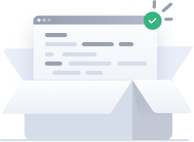
-
Customizable workflows
AdaptiveWork allows for the creation of custom workflows to fit specific business needs.
-
Real-time visibility
The platform provides real-time visibility into project status and resource allocation.
-
Collaboration tools
AdaptiveWork includes collaboration tools to facilitate communication and teamwork.
-
Steep learning curve
The platform can be complex and difficult to learn for new users.
-
Limited integrations
AdaptiveWork has limited integrations with other software tools.
-
Expensive
The platform can be costly, especially for small businesses or startups.
- The increasing need for project management software presents an opportunity for AdaptiveWork to expand its customer base.
- AdaptiveWork could potentially expand into new markets or industries.
- Partnering with other software providers could increase AdaptiveWork's integrations and functionality.
- AdaptiveWork faces competition from established project management software providers.
- Economic downturns could lead to decreased demand for project management software.
- Security breaches or data leaks could damage AdaptiveWork's reputation and customer trust.
Ask anything of Planview AdaptiveWork with Workflos AI Assistant
https://www.planview.com/products-solutions/products/adaptivework/Review Distribution
-
👍
High - rated users
The ease of use that comes from being a SaaS solution has been the strongest feature. In addition, because it is web-based, some of the configuration can be done using CSS, which does not take a lot of programmatic experience to implement.As a PPM, there are still gaps (as of this writing) in some basic PPM functionality. The most glaring to me is the lack of Capacity Planning functionality. It can handle Resource Allocation, and Resource Loading, but if you are looking for a way to forecast out what your expected capacity for future work is, you can only do it through heavy configuration. As for configuration, it has pros and cons, but one of the more challenging limitations is in changing a custom field. If, for example, you decide that the data type on a field must be changed from string to number, you cannot simply change the data type. You must create a new field with the correct data type, find all the configuration instances where that field exists (in, for example, custom actions you've programmed Clarizen to take) and replace them, then delete the old field. It's a very clunky process. The last big con we have found is that there is no archiving of data. If you want to archive your data, you must dump everything out into a EDW of some sort. This is doubtlessly to keep the database slim, but that means that the system is always an "As Is" system, and you lose the ability to analyze trends.
-
🤔
Average - rated users
N/A.N/A.
-
👎
Low - rated users
The tool as well as their support. After being with Clarizen I have learnt to what extent can Customer Support can raise the bar of the tool.Nothing so far, the support team did not leave any such experience.
Media



























